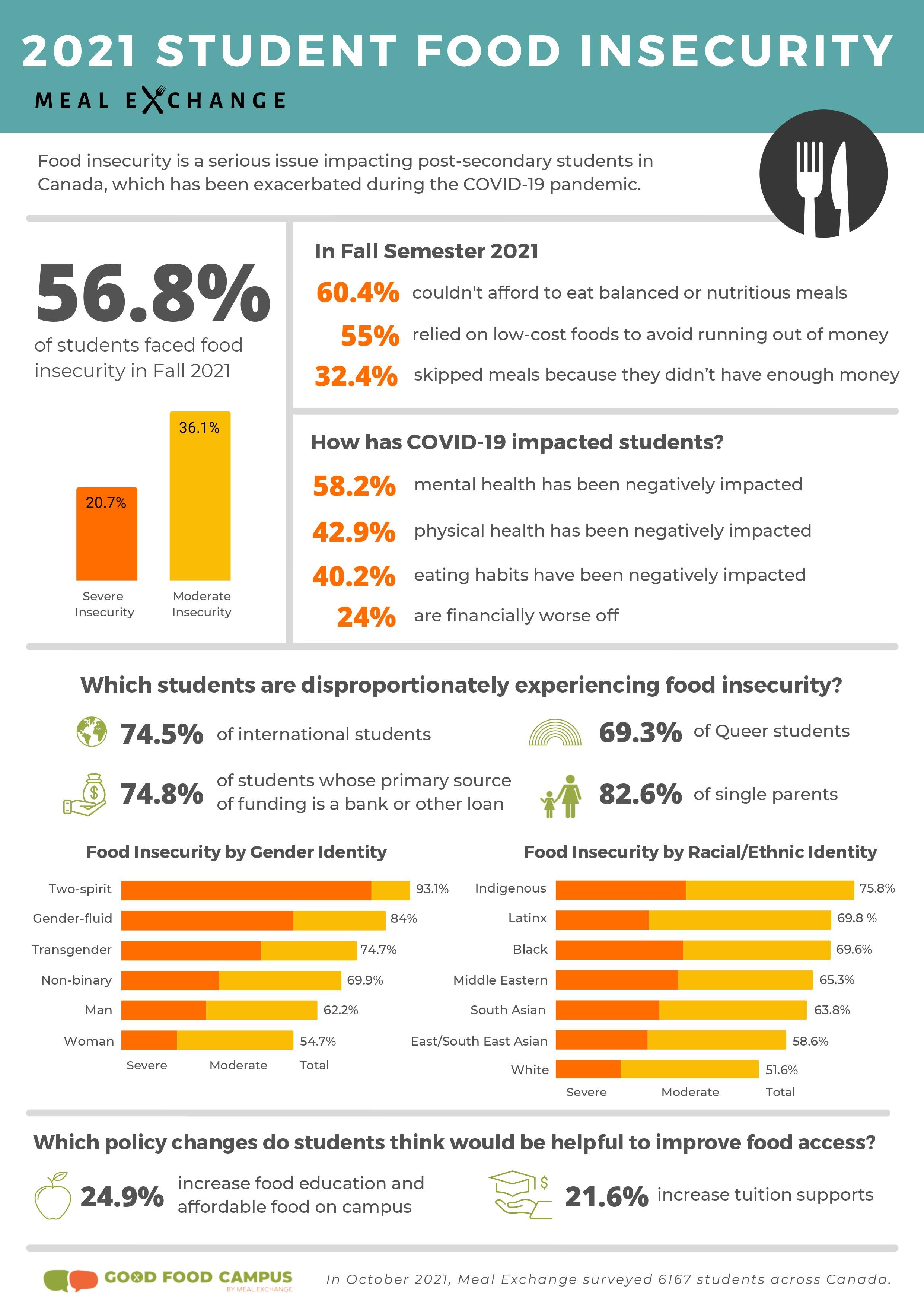By: Hannah Baillie, Director of Policy, Young Canadians Roundtable on Health
The COVID-19 pandemic has impacted all of our lives. Those with jobs began working from home, often from a dining room table or a makeshift basement office. Children were told not to go to school, or to learn their lessons on Zoom. Seniors became isolated due to their high vulnerability and risk of severe illness from COVID-19. Almost everyone felt some level of separation from their friends, neighbours, and colleagues.
But what about students?
In many cases, students became the forgotten cohort during the COVID-19 pandemic. Online classes, inflation, and unemployment disproportionately impacted students and took a toll on student mental and physical health. Most notably, rates of food insecurity increased dramatically during the pandemic.
Meal Exchange is s nationally registered charity, founded in 1993, that empowers university students to create healthy, just, and sustainable food systems. In Fall 2021, Meal Exchange released the National Student Food Insecurity Report, which analyzed data from their survey of over 6100 students across Canada.
The results of the National Student Food Insecurity Report are jarring.
Well over half of Canada’s postsecondary students experience food insecurity. 20.7% are classified as “severely food insecure” and another 36.1% are “moderately food insecure.” These numbers indicate a 39% increase in food insecurity among postsecondary students since the onset of COVID-19.
The numbers are even worse for gender and racial minorities.
An astounding 93% of respondents who identify as two-spirit faced food insecurity. Rates were also high for respondents who self-identified as gender-fluid, transgender, and non-binary. Perhaps unsurprisingly, Indigenous, Black, Middle Eastern, and Latinx students were also far more likely that Caucasian students to experience food insecurity.
Let’s break it down even further.
In the Fall semester of 2021, over 60% of students reported that they couldn’t afford to eat balanced or nutritious meals. 55% said that they relied on low-cost foods in order to avoid running out of money, and 32.4% reported skipping meals because they didn’t have enough money. Overall, affordability was the #1 factor in students’ grocery shopping decisions.
Why is food insecurity becoming more common?
There are various explanations for the sharp increase in food insecurity since the onset of COVID-19. During the pandemic, youth unemployment rates increased 6%, roughly twice the increase seen in other age groups (Statistics Canada, 2021). Secondly, when classes were shifted online, many students lost access to campus services – such as food banks, community pantries, and health services – that previously helped them meet their needs. And then there’s the rising cost of goods and services, which has made it increasingly hard to afford things like gas, clothing, tuition, and – you guessed it – food.
What can be done?
The 2021 National Student Food Insecurity Report outlined various solutions to address student food insecurity. In their survey, they asked students which policy changes they felt would be most helpful. 24.9% of students indicated that increasing food education and affordable meals on campus would improve their food access. 21.6% said that tuition supports would make a difference. Other suggestions included offering grocery store gift cards to students and delivering food boxes to students’ houses.
Regardless of the chosen course of action, one thing remains clear. For any solution to truly make a difference in addressing student food insecurity, it must be inclusive and accessible.
To read the full reports:
National Student Food Insecurity Report
En Français:
Rapport national sur l’insécurité alimentaire étudiante 2021 Affiche

